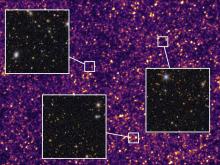A new DNA extraction technique developed by UBC researchers could make it much easier for forensic investigators and molecular biologists to isolate DNA or RNA in small or heavily contaminated samples.
The new technique, which uses electric fields instead of chemical properties to isolate DNA, has already been tested on forensic samples provided by the RCMP, and on large-scale biological samples from the Athabasca oil sands.
"By exploiting the physical traits of DNA--electric charge, length and flexibility--we've been able to extract DNA from samples that would otherwise not produce enough clean DNA for analysis," says UBC Biophysics Professor Andre Marziali.
The research team, which includes scientists from UBC and BC Cancer Agency's Genome Science Centre, details the technique in this week's Proceedings of the National Academy of Science.
Extracting DNA by conventional methods--which rely on the molecules' chemical properties--has proven challenging when there are only trace amounts of DNA or when the source sample has contaminants with similar chemical traits.
"We've found that DNA and RNA respond to electric fields in a way that is very different from other molecules," says Marziali. "By exploiting this unique property, we were able to extract high quality DNA from a highly contaminated sample."
The team was able to apply the technique to a particularly difficult metagenomics project--extracting DNA and sampling the biologic diversity of subsurface material from the Athabasca oil sands.
Because of the high level of contamination in the oil sands--a mixture of bitumen (heavy oil), water, sand and clay--extracting DNA with conventional techniques would have been extremely difficult. Using the new electrophoretic technique, more than 200 distinct bacterial genomes were isolated in the core samples used.
The electrophoretic technique is being commercialized through Boreal Genomics, a UBC spin-off company, and is expected to have broad applications from basic life-science research to forensic sample analysis, bio-defence and pathogen detection for food safety and clinical diagnostics.
Read more in the Proceedings of the National Academy of Science: www.pnas.org/content/early/recent
Musqueam First Nation land acknowledegement
We honour xwməθkwəy̓ əm (Musqueam) on whose ancestral, unceded territory UBC Vancouver is situated. UBC Science is committed to building meaningful relationships with Indigenous peoples so we can advance Reconciliation and ensure traditional ways of knowing enrich our teaching and research.
Learn more: Musqueam First Nation
Faculty of Science
Office of the Dean, Earth Sciences Building2178–2207 Main Mall
Vancouver, BC Canada
V6T 1Z4


